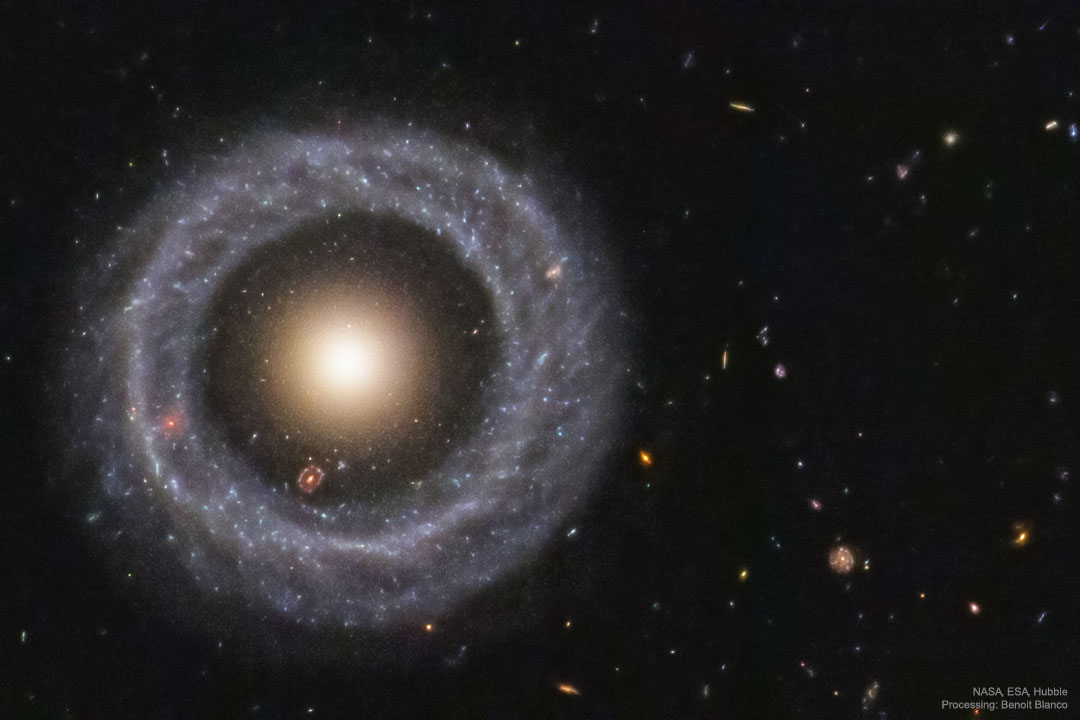2024年2月18日
Hoag’s Object: A Nearly Perfect Ring Galaxy
Image Credit: NASA, ESA, Hubble; Processing: Benoit Blanco
Explanation: Is this one galaxy or two? This question came to light in 1950 when astronomer Arthur Hoag chanced upon this unusual extragalactic object. On the outside is a ring dominated by bright blue stars, while near the center lies a ball of much redder stars that are likely much older. Between the two is a gap that appears almost completely dark. How Hoag’s Object formed, including its nearly perfectly round ring of stars and gas, remains unknown. Genesis hypotheses include a galaxy collision billions of years ago and the gravitational effect of a central bar that has since vanished. The featured photo was taken by the Hubble Space Telescope and reprocessed using an artificially intelligent de-noising algorithm. Observations in radio waves indicate that Hoag’s Object has not accreted a smaller galaxy in the past billion years. Hoag’s Object spans about 100,000 light years and lies about 600 million light years away toward the constellation of the Snake (Serpens). Many galaxies far in the distance are visible toward the right, while coincidentally, visible in the gap at about seven o’clock, is another but more distant ring galaxy.
Tomorrow’s picture: sideways sun
霍格天体: 近乎完美的环状星系
影像提供: NASA, ESA, Hubble; 影像处理: Benoit Blanco
说明: 这是一个星系还是两个?在1950年,当天文学家霍格偶然发现这个不寻常的河外天体后,大家就得面对这个问题。这个天体醒目的外环,主要是由明亮的泛蓝恒星所组成,中心的球核,主要的成员是可能远更老的泛红恒星,而一道几乎完全黝黑的缝隙横亘在二者之间。霍格天体是如何形成的,包括它的恒星和气体为何会聚成近乎完美的圆环,至今仍然不明。众多的形成假说之一认为:数十亿年前发生过星系碰撞,而原先造成这种重力效应的核心棒后来消失了。这幅主题影像是由哈勃太空望远镜所拍摄的,最近再用人工智慧的去噪讯演算法重新处理过。不过,无线电波段的观测指出,在过去数十亿年之间,霍格天体并未吸积另一个小星系。霍格天体位于北天的巨蛇座方向,大小约有100,000光年,距离则在6亿光年左右。在影像右侧可见到许多远在后方的星系,而且很凑巧的,在暗隙的七点钟方向,还有另一个更遥远的环状星系。 (Hoag’s Object 霍格天体)
明日的图片: sideways sun




Pingback: 那不勒斯湾上空的流星 – NASA中文